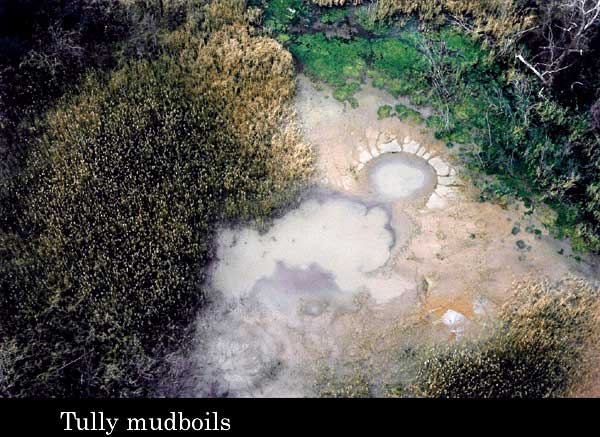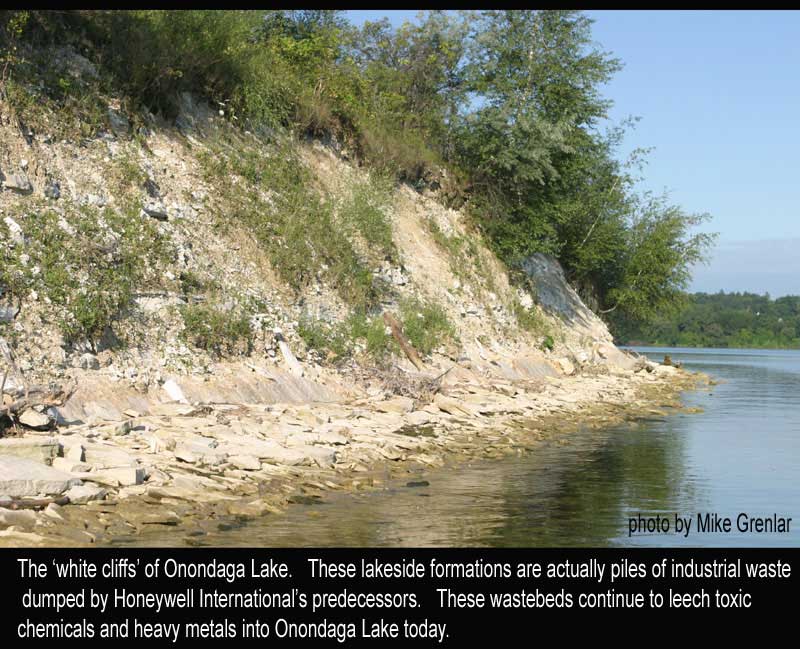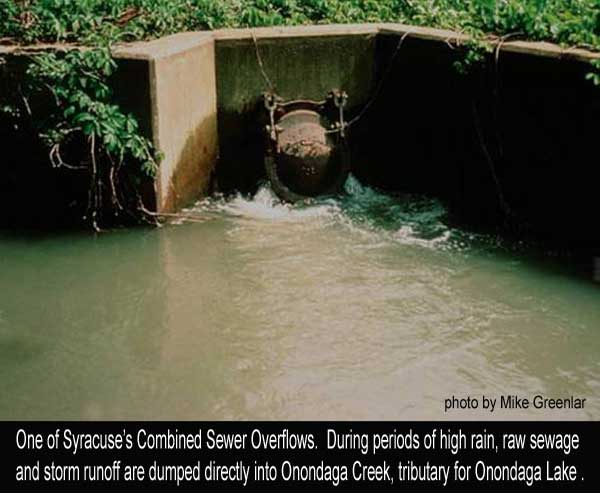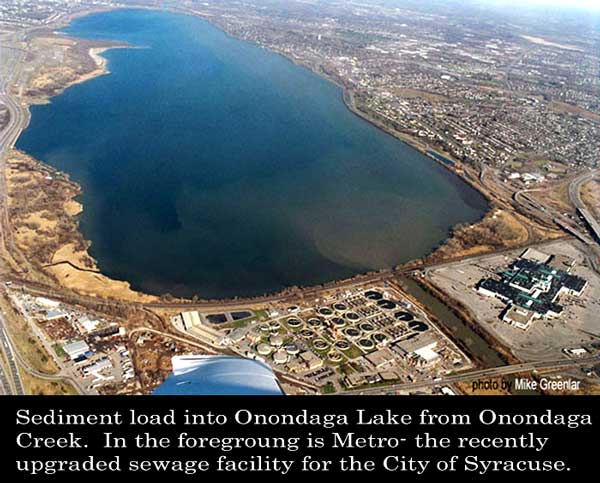LINK: Onondaga Lake- A Timeline of Pollution 1600-2000 by Michael Oberg
Onondaga Lake is roughly 4.5 miles long, 1 mile wide, and lies in Central New York, next to the city of Syracuse. The lake has an average depth of 36 feet, with two deep basins. The northern basin is 62 feet deep; the southern is 65 feet deep. Ninemile Creek and Onondaga Creek are the lake’s two largest tributaries. Additionally, the discharge from Metro – Onondaga County’s sewage treatment plant – provides almost 20% of the water flowing into the lake and as much as 30% in the summer.
Centuries ago, the Peacemaker brought the Seneca, Cayuga, Onondaga, Oneida, and Mohawk Nations together on the shores of Onondaga Lake. At the lakeshore, these warring nations accepted the message of peace, laid down their arms, and formed the Haudenosaunee Confederacy – the first representative democracy in the West. The lake became a sacred place, one that must be cared for and respected.
The Onondagas were good stewards of the Lake until New York, in defiance of federal law, took control of the lake and its surrounding areas.
ISSUES FACING ONONDAGA LAKE
Nutrients
Ammonia and phosphorus are the most prevalent nutrients in the lake, and they appear in such high levels because of human waste that was dumped into Onondaga Lake with little or no treatment. Excessive amounts of these nutrients lead to algae growth in the lake. These algal blooms used mass quantities of oxygen choking out fish and plants, especially in the deeper portions of the lake. Without oxygen in these parts of the lake, cold-water fish cannot survive. Thanks to recent upgrades at Metro fewer nutrients are pouring into the lake and there has been an improvement in water quality and an increase in fish populations.
Toxins
 The toxins are chemicals and chemical byproducts in the lake-bottom sediments, the water, and surrounding soils. They are in the lake either because they were intentionally dumped or because they seeped in from the upland toxic waste sites or the wastebeds that line the western shore of the lake. The pollutants are dangerous for humans, plants and animals in and around the lake. Some of the more prevalent toxins include mercury, chlorinated benzenes, BTEX compounds, PCBs, and PAHs. Until the toxins are removed, the lake will never be healthy and all plant and animal life in and around the lake will suffer. Scroll down to read more about these contaminants.
The toxins are chemicals and chemical byproducts in the lake-bottom sediments, the water, and surrounding soils. They are in the lake either because they were intentionally dumped or because they seeped in from the upland toxic waste sites or the wastebeds that line the western shore of the lake. The pollutants are dangerous for humans, plants and animals in and around the lake. Some of the more prevalent toxins include mercury, chlorinated benzenes, BTEX compounds, PCBs, and PAHs. Until the toxins are removed, the lake will never be healthy and all plant and animal life in and around the lake will suffer. Scroll down to read more about these contaminants.
Sediment
Every day, about one-half ton of clay and silt flows down Onondaga Creek and dumps into the lake. These sediments come from the Tully Valley mudboils. Mudboils are naturally occurring releases for groundwater pressure that is built up by the unique geology of the Tully valley. However, decades of mining by predecessors of Honeywell Int. have significantly increased sediment loading into the lake.
Solvay Wastebeds
 The Solvay wastebeds ring the southwest end of Onondaga Lake. In 1884 Honeywell’s predecessors began producing soda ash on the lakeshore. Roughly 6 million pounds of salty wastes, made up of chloride, sodium , and calcium were discharged daily to Onondaga Lake from the soda ash facility before it closed in 1986. Additional dumping created the Solvay wastebeds, which continue to leech toxins into Onondaga Lake today.
The Solvay wastebeds ring the southwest end of Onondaga Lake. In 1884 Honeywell’s predecessors began producing soda ash on the lakeshore. Roughly 6 million pounds of salty wastes, made up of chloride, sodium , and calcium were discharged daily to Onondaga Lake from the soda ash facility before it closed in 1986. Additional dumping created the Solvay wastebeds, which continue to leech toxins into Onondaga Lake today.
Mercury
Methyl mercury, the mercury found in aquatic systems, is among the most poisonous chemicals known. Mercury has been measured in fish from Onondaga lake at levels that far surpass federal and state standards. 165,000 lbs of mercury was discharged into Onondaga Lake by Allied Chemical (Honeywell’s predecessor). Scientists estimate that 7 million cubic yards of lake-bottom sediments are contaminated as a result.
Phosphorus and Ammonia
 Algal blooms are a serious problem for Onondaga Lake’s ecosystem. Algae drains the water of precious oxygen thereby inhibiting plant and fish life. Recent upgrades at Syracuse’s main sewage facility have helped curb algae-promoting nutrients like phosphorus and ammonia. But these nutrients continue to freely enter the ecosystem from combined sewer overflows (CSO) that release untreated sewage into tributaries that flow into the lake.
Algal blooms are a serious problem for Onondaga Lake’s ecosystem. Algae drains the water of precious oxygen thereby inhibiting plant and fish life. Recent upgrades at Syracuse’s main sewage facility have helped curb algae-promoting nutrients like phosphorus and ammonia. But these nutrients continue to freely enter the ecosystem from combined sewer overflows (CSO) that release untreated sewage into tributaries that flow into the lake.

